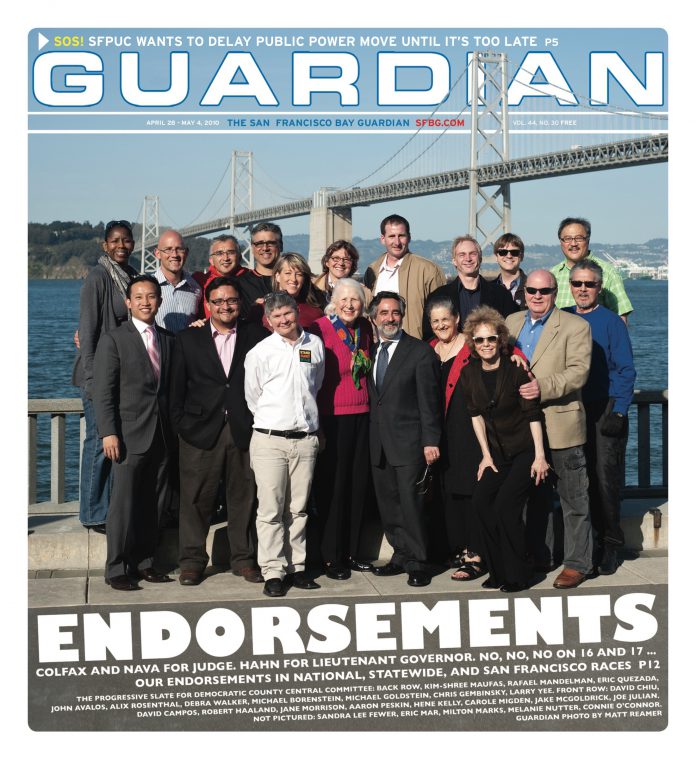arts@sfbg.com
VISUAL ART All artists, to some degree, are visionaries. They envision something the rest of us can’t or haven’t been able to. That “something” can also be the envisioning itself, a way of seeing made manifest. An articulation of that vision should hopefully leave us questioning what it is we see before us, how we have come to see before this encounter, what we haven’t seen or noticed until now. One measure of an artwork’s efficacy, then, could be to what extent we find ourselves continuing to stumble along this line of inquiry, opened up by the work, long after we have left its presence.
In this respect, the art of Morris Graves (1910-2001), which has so often been hailed as “visionary,” is particularly efficacious. The latest testament to this unsung great of midcentury American art is “The Visionary Art of Morris Graves,” Meridian Gallery’s fantastic retrospective curated by Peter Selz. Taking over the first two floors of the former beaux-arts mansion, the 45 works in this comprehensive survey encourage much pleasurable stumbling.
This exhibit takes its title from San Francisco Renaissance man Kenneth Rexroth’s laudatory 1955 essay, “The Visionary Painting of Morris Graves,” which rightfully recognized that Graves’ art could not be reduced to the sum of its influences: whether the Asian calligraphic and brush painting traditions he studied from primary sources, such as the 15th century master Sesshu, as well as their reinterpretation by fellow Northwestern artist Mark Tobey, or the wilds of coastal Washington, a region from which he drew his color palette and which he called home for a great period of his life.
I will admit that all this talk of Graves’ visionary status colored my initial approach to his art. It was hard not to first fixate on the birds, serpents, chalices, and flowers — enough to fill a tarot deck — with their aura of hermetic significance and iconographic associations. But, as Rexroth’s observations underscore, to regard Graves’ work solely as that of a sylvan mystic, as Life magazine did in its famous 1954 spread “Mystic Painters of the Northwest,” is to see it myopically.
Graves’ vision is legible on the surfaces of his paintings. Many bear traces their initial contact with the tempera, oil paint, or ink, like dampened tissue spread out to dry. One has to get close to see how Graves’ intimately imbricates his figures with the sensuous textures in which they are situated. The spermatic flower delicately zig-zagging atop an ombre sea of undulating ink wash in Effort to Bloom (1943), or the bird buried within a calligraphic nest of white hatch-marks and seemingly endlessly retraced filigree in Bird in Moonlight (1939) are just two of the more dramatic examples of how Graves combines figuration and abstraction to create an insistently tactile whole.
Jarrett Earnest, Meridian’s assistant director (and full disclosure, a personal friend), articulates this quality of Graves’ work in his catalog essay when he writes, “[Graves’ paintings] ask you to experience their surface as you would the anatomy of a lover, looking as if caressing.” This tenderness, so markedly displayed in the large color paintings, also comes through in the simpler ink portraits of animals on the second floor. In Untitled (Hibernation) (c.a. 1954) the sleeping, whiskered donut of fur Graves depicts — in just a handful of measured brush strokes — so vividly evokes a deep sense of peace that I wish it were possible to spoon. To be in its presence makes one take stock of one’s own presence.
It would be reductive and essentializing to dovetail Graves’ deep sensitivity with his openness about his homosexuality, remarkable at a time when same-sex desire was criminalized. And yet, as Earnest also concludes, there is something about the sensuality of Graves’ work — one so removed from the masculine athleticism of Graves’ Abstract Expressionist contemporaries — that makes it truly visionary. Graves’ friend John Cage called his paintings “invitations.” Don’t be afraid to accept their offer to get close.
THE VISIONARY ART OF MORRIS GRAVES
Through May 15
535 Powell, SF
(415) 398-7229

